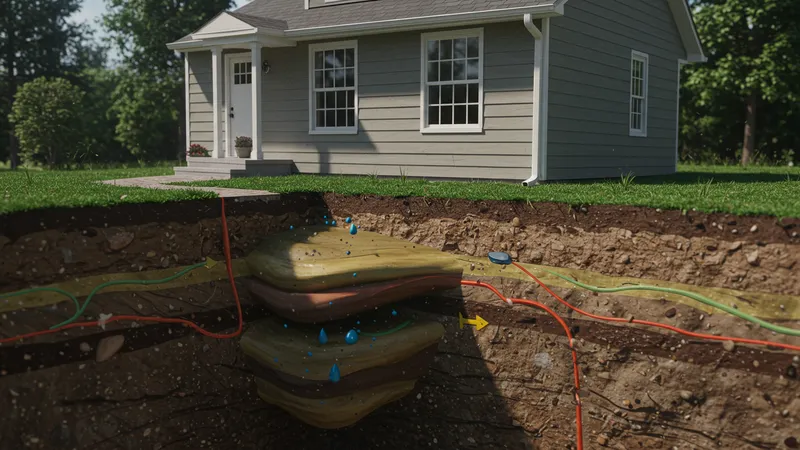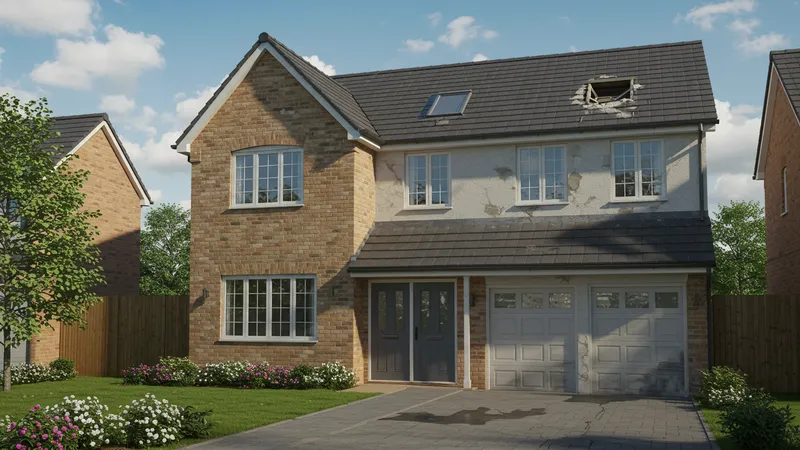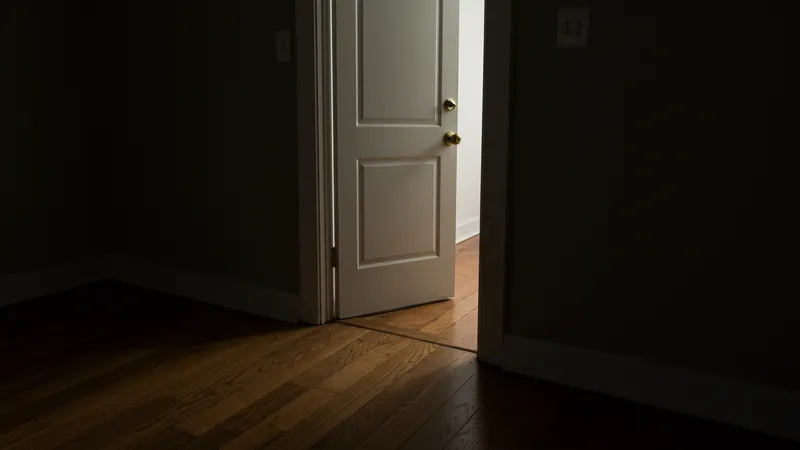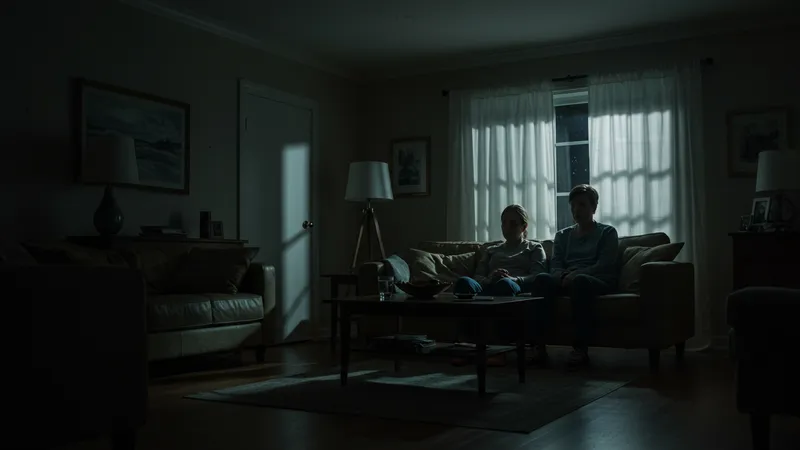Did you know that nearly 90% of foundation problems can be detected before they cause catastrophic damage? Yet, most homeowners remain blissfully unaware until it's too late.
This isn't just a conversation about housing stability—it's about protecting your biggest investment. With natural disasters on the rise, understanding the hidden signs of foundation issues has never been more crucial.

One shocking sign of foundation trouble? Cracks in walls that most people ignore. While minor shifting is normal, deep cracks are a cry for help, often masking far more sinister underpinnings. Homeowners who dismiss these can find their entire house structurally compromised. But that’s not even the wildest part...
Foundation problems don’t just pop up in old homes; they can occur in new constructions, sometimes before you even unpack! This can be due to poor soil preparation or rapidly changing weather patterns. Shockingly, what looks like harmless settling can swiftly turn into substantial repair bills. But the surprises don't stop there...
Curious about the undercover signs that experts say you mustn’t ignore? Prepare for revelations that have stunned even the most seasoned professionals. What happens next shocked even the experts, and it might just change the way you look at your home forever.
Cracks may seem like a minor aesthetic issue, but in reality, they can be red flags for deeper foundation problems. One might logically assume that a crack is just a crack; however, its width, direction, and location tell a different story. Horizontal cracks can indicate severe pressure on your walls, often due to excess moisture expanding and contracting over time. These sneaky indicators are more dangerous than you might think.

Most people spot a crack and think it's an easy fix with some plaster, but ignoring recurring or growing cracks is like ignoring a fire alarm—potentially disastrous. What's more, the financial burden of emergency repair far outweighs a proactive approach. The cost for patching versus underpinning is a financial chasm you definitely want to avoid. But there's one more twist...
Specific patterns in cracks can even reveal what types of forces may be affecting your home. For instance, stair-step cracks might suggest that parts of your foundation are settling unevenly. If this happens, it can jeopardize your home's integrity significantly over time. Knowing these subtle differences could save not just your wallet but also the safety of those residing within.
You're probably thinking that foundation issues are reserved for the unlucky few, but with soil conditions and climate change altering home landscapes, more of us are at risk than ever before. What you read next might change how you see this forever.
Believe it or not, the soil beneath your home plays one of the most critical roles in the health of your foundation. Expansive soil swells and contracts with moisture, causing more havoc than meets the eye. This natural cycle can lead to dangerous shifts, destabilizing your home from the bottom up.

There’s a common misconception that foundation issues arise solely from structural failures, but soil behavior is one of the silent architects of these crises. Homebuyers often focus entirely on the structure and overlook the ground it stands on, a costly oversight. Checking the composition of soil before purchasing property could prevent heartaches (and headaches) later.
While it might seem boring to analyze dirt, understanding whether your home sits on expansive clay or loamy soil could be the most important homework you do. Simple, cost-effective soil tests can diagnose foundational risk factors often ignored by inspections. But you might not believe what comes next…
The microclimate around your property isn’t just how the air feels; it can dictate how your foundation will fare in coming years. Factors like nearby vegetation, drainage paths, and even your neighbor’s landscaping can all subtly impact your soil stability. The connection might sound trivial, but the next details could shift your perspective forever.
Water can both support and devastate your home's foundation. Too little and the soil may become dry and shrink away, leading to a lack of support. Too much water, and you're dealing with erosion, weakening the soil's ability to hold steadfast.

People often underestimate the power of proper drainage systems in shielding foundation health. Without them, rain and irrigation systems turn into unintentional weapons, pooling around your home like a moat of potential peril. Investing in drainage improvements might sound mundane now, but compared to emergency reconstruction, it's worth every penny.
Consider adding rain barrels or gutter extensions; these aren't just eco-friendly suggestions but essential ingredients for a strong foundation defense. They help manage water levels around your home, preventing the perilous pooling that can undercut your foundation.
Have you ever considered that even the slope of your garden or patio could influence how water behaves around your property? These subtle interactions underscore the importance of every detail, each a thread weaving into the fabric of your home's story. Wait until you see how something seemingly irrelevant can play such an outsized role.
Newly constructed homes promise stability, modernity, and peace of mind with their freshly minted warrantees and sparkling finishes. But beneath those hydrodipped beams and sunlit rooms, issues can lurk, quietly undermining everything you believed promised.

Shoddy building practices are more common than you might want to believe, especially in booming markets where demand outpaces quality control. From shortcuts in materials to rushed timelines, a brand-new home can be just as at risk as a century-old manor.
Common as builder-grade construction might seem, even small overseen details—like not letting concrete cure properly—can lead to extensive, expensive foundation issues. The shine and newness can be a clever mirage, diverting your attention from these lackluster beginnings.
An overlooked fact: your gleaming new home may not only require the same vigilance as any older property but even more so. Rigorous attention during inspections isn’t just advisable; it should be mandatory for any homebuyer. And there’s more—a fact that might make you question everything you thought you knew about your new abode is next...
If you ever thought builders were completely forthcoming about every challenge your home may face, think again. The truth is, some understood shortcuts in construction aren't just accidental—they're deliberate.

Fast-tracked homes often lead to compromised quality. But do builders divulge this uneasy truth? Most commonly not. Such omissions leave unsuspecting homeowners to solve what they neither foresee nor were informed of initially, until stress cracks commence its tell-tale tale.
Even specifics such as the type of concrete used can make a world of difference. Builders rarely disclose weaker mixes that save them pennies, but compromise the enduring strength needed for your home's longevity. Discovering these practices can be shocking, and diligence during pre-purchase conditions doesn’t simply help—it’s transformative.
Understanding these insider details can equip you with crucial questions during the next builder meeting or home viewing. If your awareness elevates one important takeaway among many, it would alter how you approach each architectural interaction hereafter, providing the foresight to challenge the status quo at every opportunity.
With climate change dominating headlines, have you considered how these extremes affect your home's foundations? Weather unpredictability has transitioned from natural curiosity to constructive caution, particularly for areas susceptible to temperature extremes.

The freeze-thaw cycle, for instance, can sneakily inflict significant damage upon your foundation. Extreme temperatures compel concrete to expand and contract, placing undue stress on structural components that ideally should remain stable throughout seasons.
The invisible impact of incessant droughts or overwhelming rain caused by these climatic shifts rapidly undermines soil stability. As common as they become, some climates might often figuratively take both soil and structure to their tipping point.
But that's just scratching the surface. As you delve further into the symbiotic relationship between your home and upcoming abrupt weather patterns, prepare to view your foundation as adaptive as the changing climate itself—prepared to astound you in ways underestimated by prior assessments.
You've heard some signs before, creaky floors being among them. But beyond the mundane lies an array of indicators that demand immediate action, sparking reactions beyond silent introspection.

Imagine basement doors that seem just a bit stiff, unable to glide effortlessly as they once did. It might seem like a household querk, yet often conceals a deeper architectural narrative. And it shouldn't just interest but compel your closest attention.
Even unexpectedly sticking windows can represent the haunting prelude to a foundation shifting out of alignment. That’s more than just an inconvenience—it’s a subtle warning, a canary in the coal mine of your home's present and future.
Unlocking these often undistinguished symptoms can make a significant difference, emphasizing how they elevate your perspective of merely maintaining appearances to rectifying hidden corrosion. Let this be a glance into a better grasp of your home's chronicles, making you an insider in your sanctuary's internal dialogue.
While traditional methods have their merits, a technological revolution is underway in foundation repair. Imagine predictive algorithms that provide unprecedented insights into when and how your foundation may falter, based on environmental factors.

Scanning technologies now enable 3D imaging of soil composition, minimizing what risks may have eluded even the most experienced inspector's eyes. Preventative maintenance based on this data is no longer science fiction; it's a reality already assisting homeowners worldwide.
Unsurprisingly, drones are entering the scene, providing safeguards and aerial overviews of property landscapes not merely relegated to wall-like features or sloping angles. This access allows comprehensive analysis atypical to our expectations.
Will society finally come together to agree on the necessity of technology and traditional eyewitness approaches together? Well, there’s more ahead that might redefine just how much you ever thought technology could intertwine with your foundation’s integrity.
Money—it’s often what deters homeowners from addressing foundational issues until they're overwhelmingly unavoidable. But here’s a twist: early diagnosis is almost always financially favorable.

If you care to imagine the costs intensely, the difference could manifest as thousands of dollars between waiting for issues to become emergencies and preemptive action. Simple procedures, such as soil stabilization or pier installation, can halt future catastrophe, proving invaluable.
Calculate false savings from deferred action and face the inevitability of becoming entangled in costly repairs that interrupt cash flows thought initially saved for improvements, holidays, or investments. It’s an equation almost always in favor of proactive insight.
You'll engage with surprising cost paradigms as decisions evolving seemingly around foundation diagnostics and regularity of action refocus, urging you away from long-held suspicions, and inevitably laying out clearer financial clarity all encompassing your property’s fate.
What started as structural concern turns emotional quite quickly. Imagine peace of mind as far away when your home’s issues go unresolved, lingering with every minor nuance or detail crossing speculative streams of thought.

Your home isn't just a dwelling—it’s a refuge, an extension of shared aspirations. Any instability disrupts its perceived sanctity, expanding distressing shadows over what should be centered upon happiness, health, and family connections.
The internal rumblings can divulge unforeseen arguments or tensions orchestrated by insecurity over repairs, threatening family cohesion. It's not something numbers or spreadsheets fully encapsulate but poignant tangibility derived of nurturing essence.
As systemic pressure mounts within your home, sometimes quietly orchestrative, evaluating the emotional cost becomes paramount—you don’t just avoid damages, you protect memories, bonds, and future inspirations. Ever considered how foundation solidity could protect harmony?
Here's something you might not know: abundant local resources exist just steps from your door, and more arms open to rescue foundations than you might have believed achievable on a neighborhood scale.

Communities thrive on support, and this edifying reality gestures comfort across brittle discourse, providing residents support in locating capable professionals attuned to foundational intricacies often left incapacitated by general maintenance providers.
Many entities today possess competent professionals that resonate both locally and with state-provided oversight. Various distinctions remain at hand that inspire renewed trust and amplify comprehension, fostering confidence exceeding initial concerns.
Gathering this insight into unwitting opportunity, maybe within neighbors' recommendations or community forums, fortifies the cornerstone of reliable assistance needed by every homeowner. So, ready your action plan for when this privilege meets necessity—your community awaits engagement.
Ultimately, when it comes to foundation repairs, forward-thinking isn't just an advantage—it’s a necessity. Equipped with exceptional knowledge regarding spotting signs early, and understanding technological strides and emotional reverberations heightens awareness elucidating futures prepared rather than uncertain.

Embrace this insight and channel it into readiness—it’s essential. Foundation strength underlies mental peace and stability, reminding us that foundational integrity extends far beyond a household roof.
Whether it's networking, exploring innovative diagnostic tools, or understanding soil nuances long before illusions arise, you now sit comfortably and wiser. With combined commitment, readiness, and zeal for strategic protection underline your vital asset.
Challenge awaited influences on your foundation with fresh philosophies, underscored by your learned journey—it's an action imperative, not disregarded. Prepare for foundational resilience, a conspicuous endeavor pushing trust forward, venture beyond just reading.
The road to understanding foundation issues ends not here—it begins. Share this newfound wisdom with others, initiate discussions, and let's revitalize our approach to home care together. Bookmark this guide for future reference or share it widely to keep others informed—the knowledge of safeguarding others is power in itself.